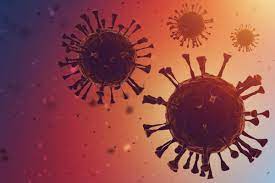
According to the World Health Organization, more scientific proof is starting to emerge that the Omicron coronavirus variant affects the upper respiratory tract, resulting in milder symptoms compared to the previous variants and resulting in a "decoupling" in some areas between soaring case numbers and low death rates.
"We are seeing more and more studies pointing out that Omicron is infecting the upper part of the body. Unlike other ones, the lungs who would be causing severe pneumonia," WHO Incident Manager Abdi Mahamud told Geneva-based journalists.
"It can be a good news, but we really require more studies to prove that."
Since November, when the significantly mutated variant was initially discovered, it has expanded rapidly, affecting at least 128 countries, posing challenges for many countries and people looking to restart their businesses and lifestyles after nearly two years of COVID-related disruptions, shows data from the WHO.
Despite the fact that case numbers are at all-time highs, hospitalization and mortality rates are generally lower than they were earlier in the pandemic.
"What we are seeing now is....the decoupling between the cases and the deaths," he said.
His comments on the lower likelihood of serious disease align with other evidence, such as research from South Africa, which was one of the first countries to find Omicron.
Mahamud, on the other hand, struck a note of caution, describing South Africa as an "outlier" due to its young population and other reasons.
He also cautioned that because of Omicron's strong transmissibility, it would become dominant in many places within weeks, posing a threat to medical systems in nations where a large percentage of the population is still unvaccinated.
While Omicron appeared to be eluding antibodies, Mahamud claimed that evidence was accumulating that COVID-19 vaccinations still gave some protection by evoking a second pillar of the immune response from T-cells.
"Our prediction is protection against severe hospitalization and death (from Omicron) will be maintained," he said, saying this also applied to vaccines developed by Sinopharm and Sinovac that are used in China, where Omicron cases remain very low.
"The challenge has not been the vaccine but the vaccination and reaching those vulnerable populations."
When asked if an Omicron-specific vaccination was required, Mahamud stated it was too early to say, but expressed reservations, emphasizing that the decision required worldwide collaboration and should not be left to manufacturers alone.
"You may go ahead with Omicron and put all your eggs in that basket and a new variant that is more transmissible or more immune-evasive may appear," he said, adding that a WHO technical group had held recent meetings on vaccine composition.
He believes that rather than offering third and fourth doses in some countries, the best strategy to mitigate the impact of the variation is to reach the WHO's objective of vaccinating 70 per cent of the population in each nation by July.
As the number of cases linked to Omicron has increased, some countries, including the United States, have shortened isolation or quarantine periods to allow asymptomatic people to return to work or school.
Leaders should make decisions based on the severity of the local pandemic, Mahamud said, adding that Western countries with high case numbers should consider shortening isolation periods to keep basic services running.
Places that have mostly blocked it out, on the other hand, might be better off keeping the entire 14-day quarantine period.
"If your numbers are very small, you better be invested in keeping that number very, very low."
(Source:www.aljazeera.com)














